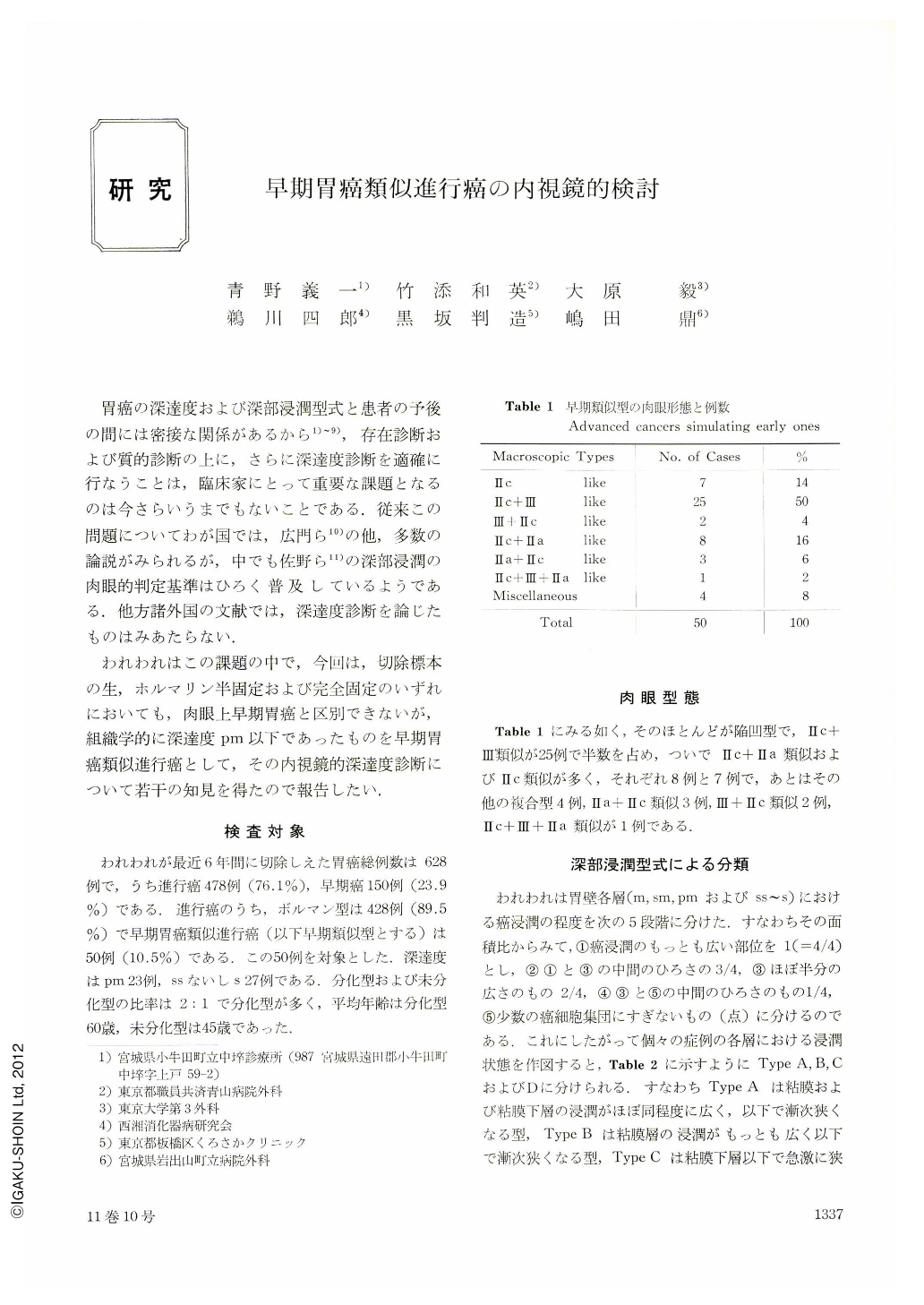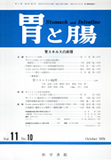Japanese
English
- 有料閲覧
- Abstract 文献概要
- 1ページ目 Look Inside
胃癌の深達度および深部浸潤型式と患者の予後の間には密接な関係があるから1)~9),存在診断および質的診断の上に,さらに深達度診断を適確に行なうことは,臨床家にとって重要な課題となるのは今さらいうまでもないことである.従来この問題についてわが国では,広門ら10)の他,多数の論説がみられるが,中でも佐野ら11)の深部浸潤の肉眼的判定基準はひろく普及しているようである.他方諸外国の文献では,深達度診断を論じたものはみあたらない.
われわれはこの課題の中で,今回は,切除標本の生,ホルマリン半固定および完全固定のいずれにおいても,肉眼上早期胃癌と区別できないが,組織学的に深達度pm以下であったものを早期胃癌類似進行癌として,その内視鏡的深達度診断について若干の知見を得たので報告したい.
During the past 6 years, gastric cancers were resected in 628 cases: 478 advanced and 150 early cancers. The advanced cancers consisted of 428 Borrmann type and 50 advanced cancers mimicking early ones. The latter was defined as those in which the lesions could not be differentiated macroscopically from early cancer both in fresh resected specimen and half or completely formalin-fixed specimen, but were later found microscopically to reach beyond the muscularis propria in the depth of invasion. These 50 cases consisted of 23 pm and 27 ss~s cases. Histopathologically, two thirds of them were of well differentiated adenocarcinoma. The average ages were 60 and 45 in differentiated and undifferentiated cases, respectively. Macroscopically, the majority were depressed types with 25 cases of IIc+III. IIc+IIa and IIc types were second in frequency. The mode of infiltration was classified into 4 types on the basis of volumes of cancer mass in each layer of the gastric wall. In the type A, in which sm invasion is bread, 11 out of 15 cases could be suspected as advanced cancers endoscopically. On the other hand, in the type B, in which cancer mass in the layers deeper the sm gradually tapers, differentiation was extremely difficult with 12 of 17 cases of those having been misinterpreted as superficial cancer. In the type C, which refers to a “pencil point” type of infiltration into the deeper layers, endoscopic depth diagnosis was entirely impossible (5 cases). Namely, endoscopic depth diagnosis in superficial type of cancers depends on the extent of invasion in the submucosal layer and has little to do with infiltration pattern into the deeper layers. In these advanced cancers simulating early ones, the extent of sm invasion was either slight or moderate. As to the site of deeper invasion, marginal type was minority (15.8%). Of 29 out of 33 cases associated with ulceration, cancer infiltration was found at the ulcers, indicating a close relationship between invasion and ulceration. At any rate, the conventional criteria for depth diagnosis were not applicable in most cases in our series.

Copyright © 1976, Igaku-Shoin Ltd. All rights reserved.


